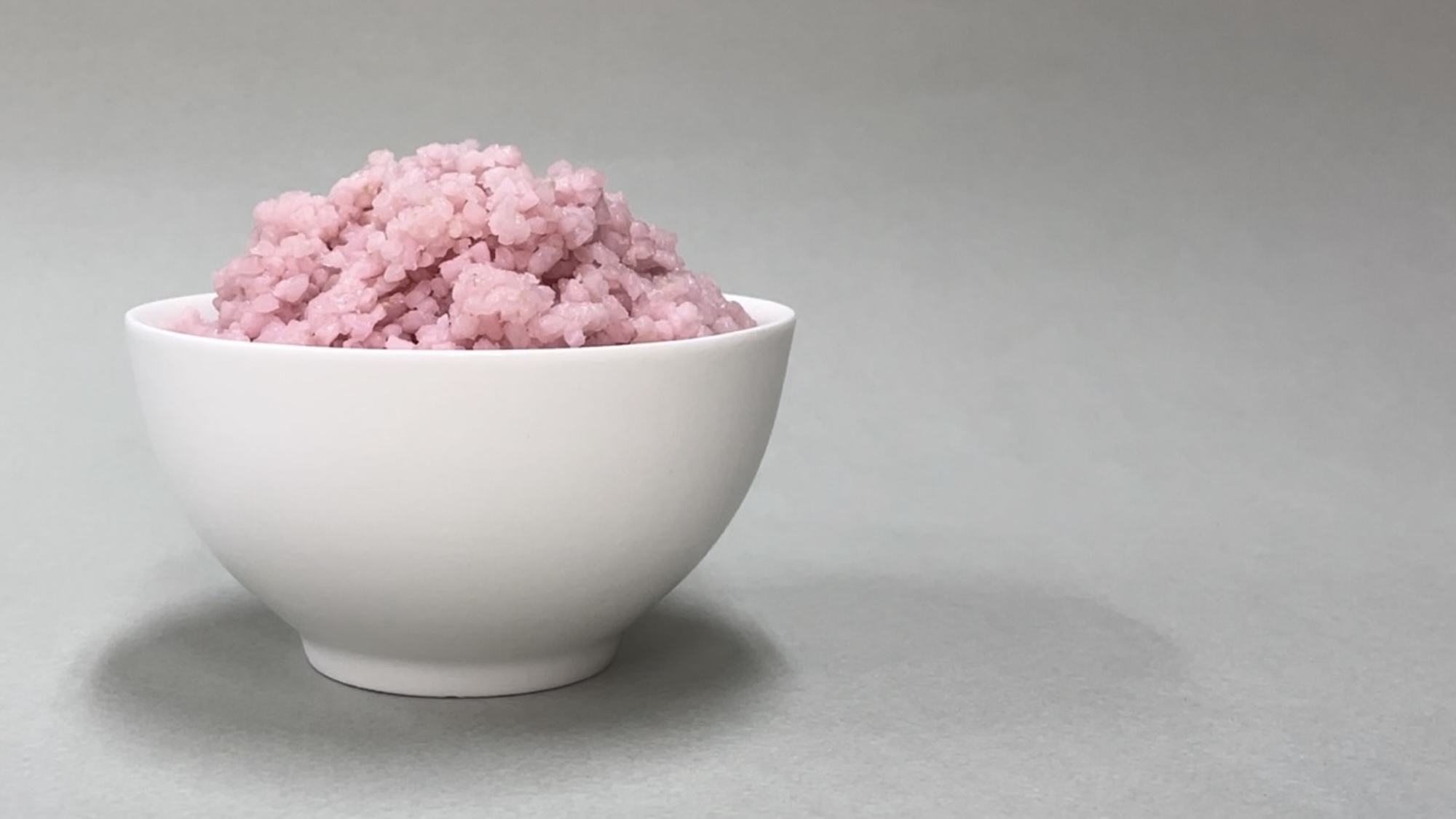

The whole point of lab-grown meat, by and large, is to create a sustainable product capable of… you know, replacing meat. Researchers at universities and startup companies across the world have spent years and a lot of money on attempts to accurately imitate chicken, beef, fish, and even extinct woolly mammoths.
It’s an uphill battle, but convincing a substantial portion of the population to reduce, if not entirely cut, animal meat from their diets is widely considered a key way to combat industrial farming’s massive global carbon emissions. But instead of trying to replicate the minutiae of a burger’s mouthfeel and flavor, one group of scientists decided to sidestep those goals entirely for a new dish: “beef rice” grown from lab-cultured cow fat cells.

But if you are skeptical at the thought of spoonfuls of synthetic meat-grain meals, fear not: Its makers swear their pinkish globules offer its consumers a “unique blend of aromas” including that “slight nuttiness and umami” usually associated with meat… or, at least, that’s what research lead Jinkee Hong swears.
“We tried it with various accompaniments and it pairs well with a range of dishes,” he relayed in a Wednesday profile at The Guardian.
Hong and his collaborators have detailed their process in a new paper published with Matter. Before unleashing their Frankenstein concoction into the world, the team first slathered regular rice grains with fish gelatin and injected them with lab-grown muscle and fat stem cells. The resultant hodgepodge then cultured anywhere from 9-to-11 days before being steamed for dinner time.
[Related: Scientists made a woolly mammoth meatball.]
Depending on the meat-to-fat cell ratios, taste tests of Hong’s reportedly yielded different scent and taste palates. Higher muscular contents predictably gave hints of meat and almond, while fattier variants offered notes of cream, butter, and coconut oil. Due to the altered chemical compositions, however, the rice generally proved firmer and more brittle than standard grains. Generally, the new dish also contains 8 percent more protein and 7 percent more fat than its naturally grown source rice.
Of course, rice isn’t exactly known for its high amounts of protein or fat, so those numbers aren’t going to factor into anyone’s pre-workout meal prep anytime soon. The real benefits to such a food alternative, argues researchers, is its impressively sustainability and cost-saving potential.
By their calculations, beef rice “has a significantly smaller carbon footprint at a fraction of a price.” Real beef farming releases nearly 50 kg (110 lbs) of CO2 emissions per 100 g of protein—the hybrid grain, meanwhile, releases less than 6.27 kg (14.8 lbs) for the same amount. And while beef costs less than $14.90 per kg (2.2 lbs), the equivalent rice might only set you back $2.23.
For what it’s worth, it doesn’t sound like the mad scientists behind beef rice expect their pink granules to replace your next hot pot’s bottom layer anytime soon. Instead, such a creation could find its way into emergency food supplies in regions struck by famine or natural disaster, as well as potentially within astronaut and military rations.
“While it does not exactly replicate the taste of beef, it offers a pleasant and novel flavor experience,” Hong said. Hungry yet?
